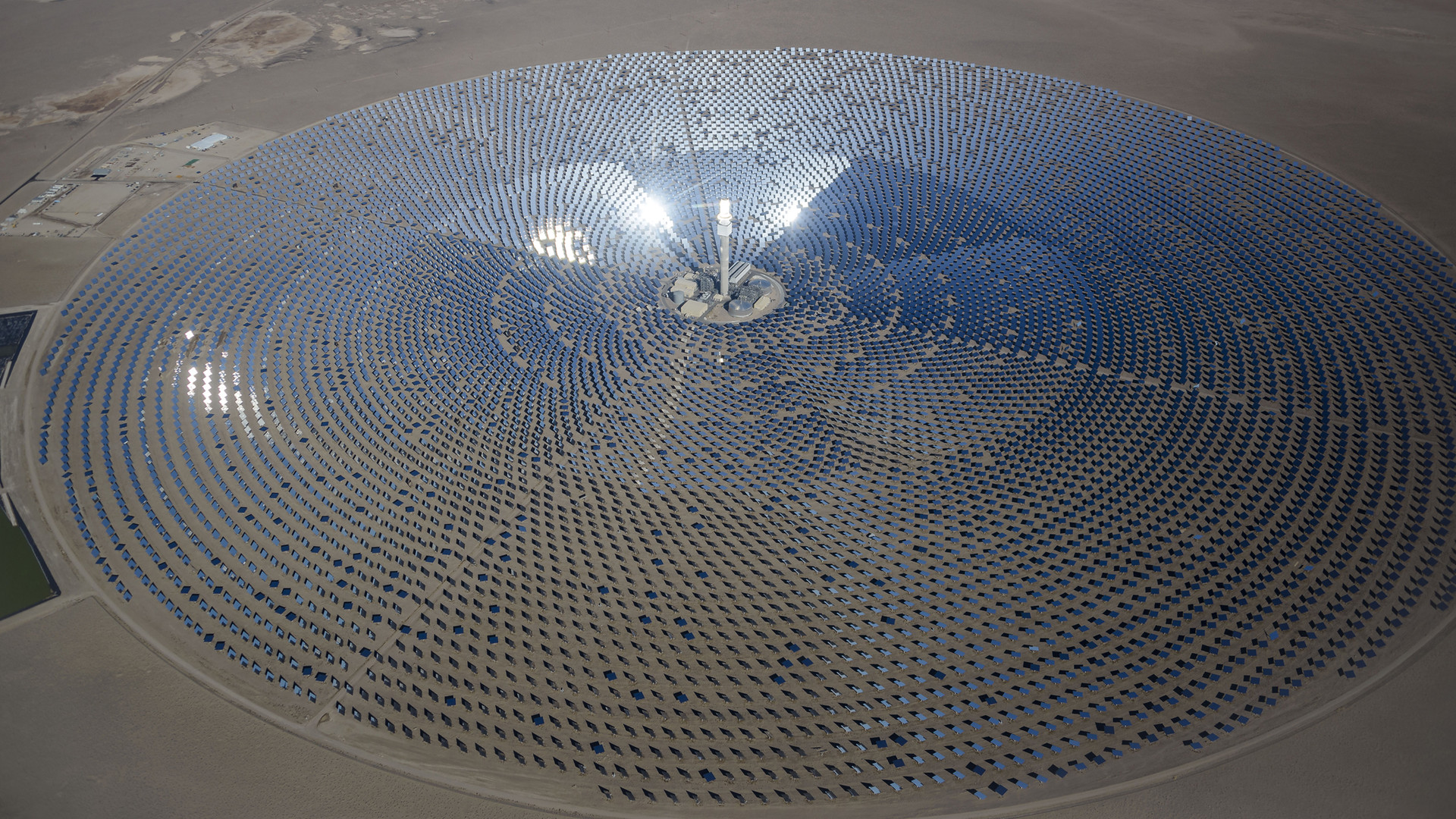Not all solar power is created equal

The Crescent Dunes solar plant, the bright curiosity that gazed upon every passing motorist driving north of Tonopah, has become Nevada’s latest taxpayer-subsidized monument to fail.
Thinking like a government, it initially penciled out. Nevada has as much of an abundance of sunshine as it has a scarcity of water and for the same reason. Tonopah, meanwhile, has needed all the help it can get from the government to keep the lights on since its initial gold and silver deposits exhausted themselves before World War II and has always been eager to receive it. Solar thermal power, the technology used by Crescent Dunes instead of the more familiar photovoltaic technology used on rooftops and in old calculators, can, at least at residential scale, be much more efficient than photovoltaic power generation.
Additionally, utility-scale projects are bureaucratically legible. It’s a lot easier to monitor one or two large power plants than it is to monitor several small ones. Consequently, if you think like a government, it saves time and money in the long run to spend hundreds of millions of dollars checking in on one large experimental power station instead of hundreds of smaller experimental power stations.
So that’s what our government did. Twice.
The trouble with solar thermal power is that, while it’s very efficient at converting solar heat into water heat in a house or an RV, it’s much less efficient at converting solar heat into actual electricity that someone might actually use to, say, write a snarky op-ed against building taxpayer-funded solar thermal power plants. Unlike photovoltaic technology, which is designed to convert sunlight directly into electrical energy, solar thermal technology has to collect heat from the sun and convert that heat into electricity.
That’s trickier than it sounds.
To explain why, consider a tea kettle. In order for it to whistle, the water within it has to be brought to a boil. This takes time, especially if someone is watching it. That time it’s taking to come to a boil is time it’s not taking to let half of your neighborhood know that you have a kettle full of boiling water and you’re currently in the bathroom tending to more important business. Until that time has passed, you might be able to use the bathroom in peace but you won’t be able to pour yourself a satisfyingly warm cup of tea. Similarly, time spent waiting for water to come to a boil in a power plant is time not spent actually generating electricity. This is just as true for solar thermal power as it is for coal, natural gas, nuclear, geothermal or any other novel method of boiling water we come up with in the future.
Now imagine if you left that tea kettle outside during winter and the only way you could heat it up was with mirrors.
There are a couple of ways to make this problem less intractable. The first way is to boil something other than water. Water, after all, boils at 212° Fahrenheit; salt, on the other hand, boils at a temperature well above that, so it absorbs more heat during the day and retains more heat at night. The second way is by keeping whatever is boiling warm using something else. This leads to the unintentionally hilarious idea of natural gas-powered solar power plants contributing greenhouse gases.
Unfortunately, we have a lot more practice keeping boiling water under control than we do keeping melting salt under control and that’s when we’re working with a single source of heat. Solar thermal heating, however, uses thousands of mirrors, each an independent redirector of the sun’s heat, each needing to move and coordinate to heat the same point at the same time.
Between Crescent Dunes and the Ivanpah solar power facility in the Mojave Desert, the Department of Energy loaned over $2 billion, most of which it’ll never get back. In return, Crescent Dunes never generated more than a quarter of the power it was designed to deliver. Ivanpah, meanwhile, delivers 40 percent of the power it was designed to deliver and burns four times as much natural gas as it was originally supposed to while doing so.
Meanwhile, we’ve been buying inexpensive solar-powered calculators for decades.
Why wouldn’t we? Even with the laughably inefficient solar cells available during the 1980s, small, inexpensive solar panels saved customers from having to buy batteries and saved manufacturers from having to include both the space and circuitry necessary to store batteries and convert their energy into math.
As photovoltaic technology developed, people found more and more useful applications for it. The most useful applications thus far mirrored those old solar powered calculators - photovoltaic technology is fantastic at providing small, easily scalable amounts of portable power, especially when paired with rechargeable batteries. This makes it a perfect technology to deploy for road signs, motorhomes and RVs, and remote locations that don’t justify running a power line to the grid. It’s also a handy way to provide backup power for businesses and institutions that wish to minimize downtime and wish to fire up their backup generator as seldom as possible.
Photovoltaic technology has also enabled those with a more individualistic bent to achieve a bit more self-sufficiency than they might otherwise have by powering their homes and contributing their surplus power to the grid. Economically speaking, this makes about as much sense as growing vegetables in your yard (namely, not much if you value your time at all), but there’s nothing wrong with having hobbies or purchasing individual energy independence as a luxury good.
Photovoltaic technology is also scalable. If you need more power, you put up more solar panels. If you need less power, you take them down. Good luck doing that with a large solar thermal plant.
Having said all that, even though photovoltaic technology is far more promising than solar thermal technology, it’s not a panacea. Solar panels are semiconductors, and like all semiconductors, they’re a mess to produce or dispose of. This, of course, isn’t unique to solar panels; you can’t exactly throw a coal or natural gas fired plant into your kitchen trash and haul it to the dump, either. Though they’re far more efficient than they used to be, they’ve historically also required considerable government subsidies - Chinese government subsidies, to be more specific - to be directly competitive with more traditional modes of power generation.
As for rooftop solar, it’s hard to tell whether it’s economical or not as long as we insist on maintaining a regional monopoly on power distribution with government-mandated rates. That said, it’s also hard to deny that our power grid was designed around delivering power to homes, not receiving power from them. Additionally, the vision of ubiquitous rooftop solar bumps gently against the vision of denser, more walkable cities. The Reno City Council already had to swim against the tide a bit by overturning a restrictive shade ordinance that had no business being applied in a downtown area. It did the right thing by doing so, but the more money there is to be made or saved by putting a solar panel on a neighbor’s roof, the more likely each neighbor will view sunlight as a property right. This may make approving taller construction more politically complicated than it already is.
Thankfully, there are easy enough ways to address most of these issues as long as governments don’t treat solar power as if it’s functionally identical to fossil fuels or nuclear power and both regulate and subsidize it accordingly. The sun’s rays are ubiquitous and transport freely. Consequently, we don’t have to put all of our solar production in large, heavily capitalized, centralized locations as we have to with coal, natural gas, or nuclear power, all of which require complicated logistics to ship and store fuel. Instead, we can safely rely on individual choice and voluntary action, not government coercion, to determine where best to site solar panels, how many solar panels are necessary and which solar technologies to use depending upon the desired application.
If we leave solar power up to the government, our deserts will be littered with fossil fueled mirrors, molten salt, and billions of dollars worth of debt. If we leave solar power up to individuals, our cities will generate power from our rooftops.
Which sounds easier to clean up to you?
David Colborne has been active in the Libertarian Party for two decades. During that time, he has blogged intermittently on his personal blog, as well as the Libertarian Party of Nevada blog, and ran for office twice as a Libertarian candidate. He serves on the Executive Committee for both his state and county Libertarian Party chapters. He is the father of two sons and an IT professional. You can follow him on Twitter @DavidColborne or email him at [email protected].
